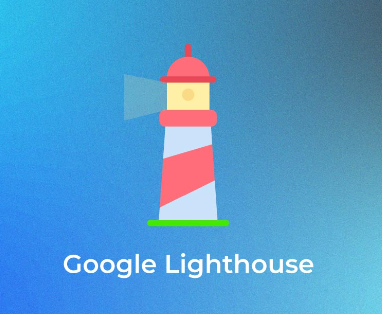Next-Gen Formats: Shaping the Future of Technology
One of the key drivers of this evolution is the continuous development of next-generation formats. These formats encompass a wide range of technologies, from file formats to communication protocols, and they play a pivotal role in shaping the future of technology. In this article, we will explore the significance and impact of next-gen formats in various domains and their implications for businesses and consumers alike.
Understanding Next-Gen Formats
Next-gen formats are essentially updated versions of existing technologies, designed to overcome limitations and enhance performance. They bring innovation to various sectors and often serve as a bridge to emerging technologies. Here are some key areas where next-gen formats are making a significant impact:
File Formats and Compression Techniques
Next-gen formats in this category are revolutionizing the way data is stored, transmitted, and processed. For instance, the introduction of the High Efficiency Video Coding (HEVC) format has drastically improved video compression, allowing for higher resolutions and better quality while minimizing bandwidth requirements. In the world of images, WebP is emerging as an efficient alternative to JPEG, providing smaller file sizes without compromising quality.
Communication Protocols
In the era of the Internet of Things (IoT), communication protocols are evolving rapidly to accommodate the growing number of connected devices. Protocols like MQTT (Message Queuing Telemetry Transport) and CoAP (Constrained Application Protocol) are designed to facilitate efficient and lightweight communication between IoT devices, reducing latency and conserving energy.
Audio Formats
Next-gen audio formats are offering immersive and high-quality sound experiences. The Dolby Atmos and DTS:X formats, for example, provide spatial audio, enabling a more realistic and immersive listening experience in home theaters and cinemas.
Document Standards
In the world of documents, Portable Document Format (PDF) is undergoing transformation with PDF/A, a format designed for long-term archiving, and PDF/UA, which ensures accessibility for people with disabilities. These formats are making documents more robust and user-friendly.
Impact on Businesses
Next-gen formats have a profound impact on businesses across various sectors. Here are some ways in which they influence the corporate landscape:
Improved Efficiency
Next-gen formats often optimize data storage and transmission, leading to improved efficiency in data handling. This is particularly valuable for businesses dealing with large datasets or requiring real-time data transfer, such as e-commerce companies, financial institutions, and logistics providers.
Enhanced Customer Experience
Businesses that leverage next-gen audio and video formats can offer customers more immersive and engaging experiences. Streaming platforms, gaming companies, and virtual reality providers can create content that stands out and captivates audiences.
Cost Savings
Efficient file formats and communication protocols can lead to significant cost savings in terms of bandwidth and storage. For businesses operating in the cloud or relying on data-intensive applications, this translates into reduced operational expenses.
Competitive Advantage
Adopting next-gen formats early can provide a competitive advantage. Companies that embrace these technologies are better positioned to offer cutting-edge products and services, attracting tech-savvy customers and partners.
Consumers also reap numerous benefits from next-gen formats:
Enhanced Media Experiences
Consumers enjoy sharper and more immersive media experiences, whether it's watching ultra-high-definition videos, playing immersive games, or listening to crystal-clear audio. This elevates the overall quality of entertainment.
Faster and More Reliable Services
Next-gen formats enable faster loading times for websites, quicker downloads, and smoother streaming. This leads to a more seamless online experience, reducing frustration caused by lag and buffering.
Interoperability
Compatibility between devices and platforms is improving, thanks to standardized next-gen formats. Consumers can switch between devices and services with greater ease, knowing their data and media will work seamlessly.
Accessibility and Inclusivity
Document and web formats that prioritize accessibility ensure that everyone, including people with disabilities, can access information and services more easily. This promotes inclusivity and equal access to digital content.
Challenges and Considerations
While the benefits of next-gen formats are evident, there are also challenges and considerations to keep in mind:
Compatibility Issues
The adoption of new formats can lead to compatibility issues with older hardware and software. This can necessitate updates or replacements, which may be costly and time-consuming.
Security Concerns
As formats evolve, so do potential security vulnerabilities. Businesses and individuals must stay vigilant and adopt security measures to protect their data and systems.
Data Migration
Migrating existing data to next-gen formats can be a complex task. Proper planning and data management strategies are essential to ensure a smooth transition.
Industry Standards
The development and adoption of industry standards for next-gen formats are critical to ensure widespread compatibility and interoperability.
Conclusion
Next-gen formats are driving innovation and shaping the future of technology across various domains. From file formats and communication protocols to audio and document standards, these formats are enhancing efficiency, improving experiences, and offering cost-saving opportunities for businesses. Consumers benefit from higher-quality media, faster services, and increased accessibility.
Check also: RabbitLoader
However, the adoption of next-gen formats also presents challenges, including compatibility issues and security concerns. To harness the full potential of these formats, businesses and individuals must navigate these challenges wisely, staying informed about emerging standards and best practices. As technology continues to advance, embracing next-gen formats is not just an option but a necessity for those seeking to thrive in the digital landscape of tomorrow.

%20(1).png)



Comments
Post a Comment